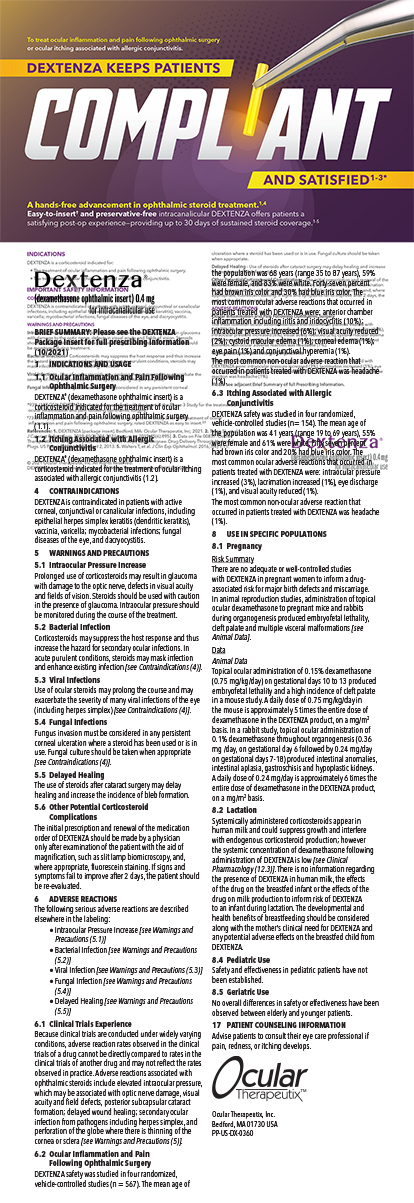How do you factor in posterior corneal astigmatism when selecting the power of a toric IOL if the patient has anterior corneal with-the-rule astigmatism or anterior corneal against-the- rule astigmatism? How do you optimize the end result for patients?
Rosa Braga-Mele, MD
I have always undercorrected with-the-rule corneal astigmatism by about 0.30 D, because I never want to flip the axis and create residual against-the-rule astigmatism. Patients would be unhappy if I flipped their axes.
Recently, Douglas Koch, MD, and colleagues published findings on posterior corneal astigmatism that confirmed my “intuition.”1 They found that the steep axis of posterior corneal astigmatism was oriented in the horizontal meridian in about 87% of eyes and was not factored into what is typically measured as anterior corneal astigmatism. This would overestimate anterior corneal astigmatism by about 0.50 D for with-the-rule anterior corneal astigmatism and underestimate it by about 0.30 D for against-the-rule anterior corneal astigmatism.
I essentially follow these simple rules. I aim to undercorrect patients who have with-the-rule anterior corneal astigmatism by about 0.30 to 0.50 D, either with a toric IOL or limbal relaxing incisions, usually resulting in plano. For patients with against-the-rule anterior corneal astigmatism, I correct (but do not overcorrect) the full amount of astigmatism. I find that, if patients are left with astigmatism of 0.25 to 0.30 D, they are happy and have some increased depth of focus.
Randy J. Epstein, MD
I use nomograms developed by Drs. Douglas Koch and Arturo Chayet (personal communications, February 2013) that factor in posterior corneal astigmatism. When the choice between options for a patient is borderline, I always choose the more conservative approach if he or she has with-the-rule plus cylinder astigmatism and the more aggressive choice if he or she has against-the-rule plus cylinder astigmatism. For example, neither nomogram recommends the use of even the lowest-powered toric IOL (model T3) from Alcon Laboratories, Inc., if there is less than 1.50 D of final, total, with-the-rule astigmatism on the cornea (taking surgically induced astigmatism into consideration).
Douglas A. Katsev, MD
I do not have any tricks for this situation, because I do not measure posterior corneal astigmatism and do not find a need to touch up or rotate IOLs in these patients. I follow the rule, “If it ain't broke, don't fix it.” These are very happy patients. I do, however, often use TrueVision 3D Visualization System (TrueVision Systems, Inc.) to place toric IOLs.
Stephen A. Updegraff, MD
I am not convinced that posterior corneal astigmatism is a significant factor, not because it does not exist, but because the measurement of posterior corneal astigmatism is not repeatable. Several scans with the Orbscan (Bausch + Lomb) or Pentacam Comprehensive Eye Scanner (Oculus Optikgeräte GmbH) will demonstrate variability. I am extremely happy with my toric IOL results. I use Mastel Fixation Glasses (Mastel Precision) and a plumb bob marker before using the LenSx Laser (Alcon Laboratories, Inc.). At the time of laser cataract surgery, I orient the reticule over the marks and ablate orientation marks at a depth of 30% to align to the toric IOL's axis marks. I always try to leave 0.25 to 0.33 D of with-the-rule astigmatism.
Section Editor John F. Doane, MD, is in private practice with Discover Vision Centers in Kansas City, Missouri, and he is a clinical assistant professor with the Department of Ophthalmology, Kansas University Medical Center in Kansas City, Kansas. Dr. Doane may be reached at (816) 478-1230; jdoane@discovervision.com.
Rosa Braga-Mele, MD, is the director of the cataract unit at Mount Sinai Hospital, an associate professor at the University of Toronto, and director of research at Kensington Eye Institute in Toronto. Dr. Braga-Mele may be reached at (416) 462- 0393; rbragamele@rogers.com.
Randy J. Epstein, MD, is a professor of ophthalmology at Rush University Medical Center in Chicago. He is an ad hoc consultant to Alcon Laboratories, Inc., Bausch + Lomb, and Tear Sciences, Inc. Dr. Epstein may be reached at (847) 432-6010; repstein@chicagocornea.com.
Douglas A. Katsev, MD, is in private practice at the Sansum Santa Barbara Medical Foundation in California. He stated that he made a financial investment in TrueVision, Inc., 4 years ago. Dr. Katsev may be reached at (805) 681-8950; katsev@aol.com.
Stephen A. Updegraff, MD, is the medical director of Updegraff Vision in St. Petersburg, Florida. He acknowledged no financial interest in the products or companies he mentioned. Dr. Updegraff may be reached at (727) 822-4287; steveupdegraff@mac.com.
- Koch DD, Ali SF, Weikert MP, et al. Contribution of posterior corneal astigmatism to total corneal astigmatism. J Cataract Refract Surg. 2012;38(12):2080-2087.


